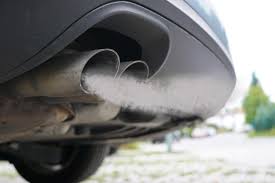2ZZGE VS 4AGE20V
The End Cuts!
2ZZ-GE vs 4AGE20V
When discussing high-revving four-cylinder engines from Toyota’s golden era of performance, two names often dominate the conversation: the 2ZZ-GE and the 4A-GE 20V. Both represent pinnacle engineering for naturally aspirated inline-4s within their respective generations and have become icons among enthusiasts. While they share similar displacement and high-revving character, their design philosophies, performance characteristics, and tuning potential set them apart, making each engine uniquely suited to different types of driving and modification goals.
The 4A-GE 20V, particularly in its Blacktop and Silvertop variants, was the final evolution of the legendary 4A-GE engine series that began in the 1980s. This 1.6-liter engine featured five valves per cylinder (20 valves total), individual throttle bodies (ITBs), and high compression ratios, making it a technological marvel in its time. Producing around 160+ horsepower at 7,800 RPM, the Blacktop version was a favorite for lightweight, high-revving applications. Found in the JDM Toyota Levin, Corolla AE111, and popular for swaps into AE86s, it’s revered for its instant throttle response and raw mechanical feel.
In contrast, the 2ZZ-GE was Toyota’s more modern 1.8-liter performance engine, co-developed with Yamaha and designed to meet stricter emissions while still offering a high-revving, sporty character. Used in vehicles like the Celica GTS, Lotus Elise, and Corolla T-Sport, it made 180–190 horsepower at 7,600–8,200 RPM and featured VVTL-i (Variable Valve Timing and Lift), allowing the engine to switch to aggressive cam profiles at high RPM. This system mimicked the VTEC approach from Honda and gave the 2ZZ a distinct surge in power as it approached redline, making it exhilarating to drive at full throttle.
In terms of engineering, the 4A-GE 20V was purist and analog, while the 2ZZ-GE embraced modern electronics and emissions-conscious design. The 4A-GE’s ITBs and cable throttle give it razor-sharp response, making it ideal for track driving or spirited mountain runs in lightweight chassis. On the other hand, the 2ZZ-GE uses a more refined, emissions-friendly intake and drive-by-wire in later versions, but benefits from stronger internals, better aftermarket ECU integration, and compatibility with modern performance upgrades, including turbocharging.
When it comes to tuning potential, the 2ZZ-GE holds the advantage. Its forged crankshaft, higher displacement, and stronger factory support make it more resilient to forced induction. Aftermarket supercharger and turbo kits are more common, and support for standalone ECUs is robust. The 4A-GE 20V, while tuneable, is more sensitive to boost and typically kept naturally aspirated. However, its lighter weight and high-RPM throttle response make it a dream for purist builds and retro swaps, particularly in older RWD platforms like the AE86.
In conclusion, both the 2ZZ-GE and 4A-GE 20V are masterpieces of Toyota engineering, but they cater to different driving philosophies. The 4A-GE 20V is a high-revving, analog legend best suited to lightweight RWD cars and classic-style performance builds. The 2ZZ-GE is a modern, tunable high-performance engine that balances emissions compliance with raw power potential, making it a better choice for those seeking versatility and upgrade paths. Whether your heart leans toward the classic or the modern, either engine delivers a rewarding, high-RPM driving experience that few modern four-cylinders can match.




Comments
Post a Comment